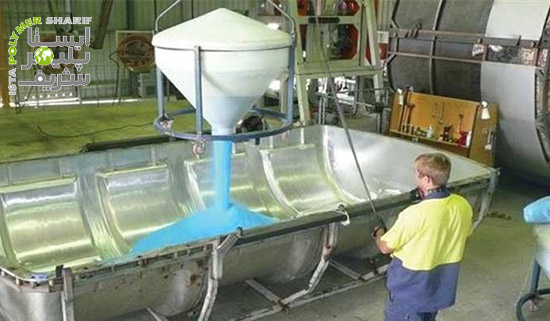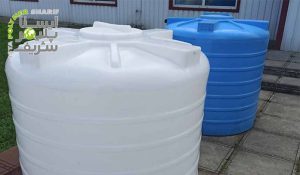Polyethylene tanks are one of the important products for storing large volumes of liquids and are used in various industries. These tanks come in various models and are produced using different methods based on their characteristics. Rotational molding is a commonly used method in tank production, and this article will provide a comprehensive overview of it. Understanding this manufacturing method will give you a better insight into the performance of the produced tanks, allowing you to make a well-informed purchase decision.
Steps in the Production of Polyethylene Tanks
The production process of polyethylene tanks generally follows specific steps, and different methods of production vary in some of these stages. In rotational molding, the first stage involves shaping the raw polyethylene material in the mold through a rotational process. Initially, the material is poured into a mold at the appropriate temperature and then placed in an oven. With the help of rotational motion, the powder fully melts and takes the shape of the mold. The mold is also rotated during cooling to ensure that the product retains the mold’s shape as it cools. The final product is then refined, and after quality control, it is sent to the warehouse and then to the market. Rotational molding is one of the most cost-effective methods of producing tanks, and we have provided an overview of its stages here. However, the production of tanks using this method has many details that we will explore further.
Production of Polyethylene Tanks Using Rotational Molding
The widespread use of tanks in various locations has increased attention to their production. Since the method of production greatly affects the quality and durability of the product, it is beneficial to have sufficient knowledge about the production methods of these tanks. The production of tanks using rotational molding typically involves the following stages:
Granule Grinding
Usually, before starting production, raw materials are procured. For rotational molding, polymer granules must be ground into powder and mixed with other additives such as permitted colorants to prepare for the production process. To ensure proper and compatible mixing of these materials, they are first passed through an extruder and then enter the main production process.
Pouring Raw Material into the Mold
The molds used in this method are typically composed of two or more parts, with the joints between the pieces being detectable on the outer surface. These joints help in removing the formed material from the mold. For multi-layer products, after the initial layer of powder is poured and shaped, several more layers are added through repeated cycles of heating and pouring to achieve the desired product. In other words, the mold goes through the oven multiple times, with powder and other compounds added in each cycle until the final product is formed.
Mold Rotation in the Oven

In this stage of polyethylene tank production using rotational molding, the mold rotates in the oven on two perpendicular axes, allowing the powder to come into contact with all surfaces. As the mold reaches the appropriate temperature, the powder melts and adheres to the mold. With increased heat, all the powder melts and takes the shape of the mold.
Mold Rotation and Cooling
To separate the formed material from the mold, it must be thoroughly cooled. The mold is removed from the oven and rotated while being exposed to a cooling agent to ensure proper cooling. Since this step is crucial for the shaping of the product, rotational motion continues until the product is completely dry to maintain higher quality. After the product cools completely, it contracts slightly and is easily removed from the mold.
Removing Waste
After the polyethylene tank is formed and removed from the mold, it is time to trim and remove excess material to prepare the tank for quality control. This step is critical in producing a high-quality product. Therefore, attention to waste removal is crucial in rotational molding.
Quality Inspection and Control
In this stage, the produced product is examined and tested to ensure it meets the required standards and does not have any defects. After visually inspecting the product, it is sent to a laboratory for leakage tests, weight tolerance, mechanical impacts, and other quality assessments.
After completing all these stages, the production of polyethylene tanks using rotational molding is finalized. Next, the tank is fitted with outlet and inlet valves and other components such as screws and bolts, typically based on the tank’s application and customer requirements.
Summary
The production of polyethylene tanks using rotational molding involves various stages such as grinding raw materials, molding, cooling, and more. Rotational motion plays a significant role in enhancing the effectiveness of these stages. This motion ensures that all surfaces of the product experience uniform conditions, preventing weaknesses in other parts of the product. In the end, quality control ensures that the final product meets the required standards. If needed, you can specify the dimensions, appearance, equipment, and other details of the product to the manufacturer to receive a customized product that meets your needs.






